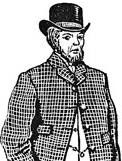 |
George Frederick Branson was a larger than life character who livened up Cosgrove,
leaving behind him a splendid house and even more splendid legends.
|
He was born around 1855 in Southampton. Although it was widely believed that he had no connection with Cosgrove, there were several households by that name in the village and the Census for 1871 records George Frederick as a nephew of William Branson, visiting the cooper’s family at Bridge House at the age of 16.

In his mid-forties George Branson re-appeared in Cosgrove with a “sizeable fortune”. Stories abound as to how he came by this money, fascinating newspaper writers.
*************************************************
Wolverton Express 6th October 1972
‘WHEN COSGROVE LODGE WAS BRANSON’S FOLLY’
Mackenzie Hill Ltd., who have bought Cosgrove Lodge for a reputed £250,000, many think its 110 acre park has a future potentially rich in capital returns. But a glance at its history reveals a past rich in colour and controversy
Colour was in the form of one George Frederick Branson, a 19th century version of today’s football pools winner, who came into a fortune by luck and allegedly lost it through luxury, leaving Cosgrove Lodge as his only lasting achievement.
Controversy has surrounded the estate for generations, from gossip mongers speculating the naughty goings-on at the Branson’s Folly as the Lodge was originally called, to the opening of the gravel pits and later the leisure park with thousands of day trippers pouring through the village with cars and caravans.
It all started, as some locals still recall, with “Squire” Branson’s arrival at Cosgrove at the end of the 19th century. This is how the “Express” recorded the story in 1961.
“Dover’s boy, potman, barman he might have been but when he came to this small Northants village in 1898 he had quite a sizeable fortune.
“He had won the money on a sweepstake in an out-post of the British Empire – some say Canada, others India, South Africa or even Australia. Anyhow this rotund, jovial man with a charming wife showed a sound business head.
“Before coming to Cosgrove he set part of his winnings to work, buying up public houses, improving them and selling them to breweries at a handsome profit.
“It is a fact that Branson built the Lodge on the site of the former farmhouse in 1898 – and he made sure people remembered him. His name was cut on a foundation stone near the front door. His initials stand boldly in stone over the porch, intertwined in the massive black iron gates and still be vaguely seen on some doorknobs.
“G.F.B. is carved over the fireplace and in the hall – but the Bransons did not need the initials. People still talk of his fabulous extravagance, his generosity, his drinking and his all-night parties.
“Branson had a house in London and many were his rich friends he entertained at The Lodge with parties that set the village talking. Some people envious of his apparent wealth and contemptuous of his extravagance prophesied: ‘He’ll die a pauper’.
They may well have been right. About 10 years after making his home at Cosgrove, Branson left – selling the house he had so splendidly built with all the best materials – and returned to London. Some say he died a poor man.
“That may be so. But his monument is at Cosgrove in his house and in the memories of his misguided generosity.”
Some of these assertions can be proved by checking historical records.
Branson’s first marriage to Elizabeth Murrell was properly certified in 1884. He described himself as an engineer, living in Tottenham.

In 1886 Branson certainly owned a pub in East Ham, London – He is recorded as a member of the Licensed Victuallers at the age of 31.
By the time he was 34 in 1889 George Frederick had been accepted by the Freemasons as a member of the Duke of Connaught Lodge in Camberwell.
He appears in the 1891 Census living in Kentish Town, married to Elizabeth Branson. He is also listed in the Post Office directory as the publican of the building in this picture, now gentrified and renamed:
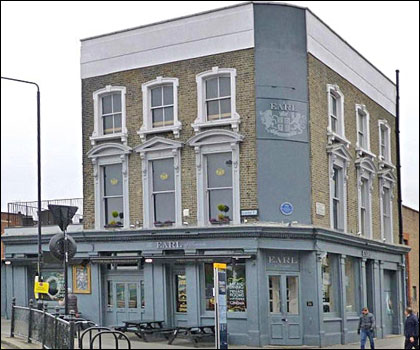
However, things were not altogether smooth for Branson and his wife during this period. He appeared at Bow Street charged with fraud in connection with a bankruptcy in 1893, displaying a certain style and champagne taste!
London Evening Standard - Saturday 14 January 1893
BOW -STREET. William Ball, of the Golden Cross, Colnebrook, Bucks ; and George Frederick Branson, of the Fountain, 105, Lambeth-walk, appeared to summonses charging them with unlawfully conspiring together to defraud Ball's The allegations were to that six batches of property had not been disclosed in course of the bankruptcy. The first of these was a horse, trap, and harness. The second batch of property consisted of 37 cases of champagne. The third lot of property consisted of cigars, cigarettes, and wines to the value of 250L. In June last Branson went to see Ball and a quarrel appeared to have arisen over a cheque. Branson wrote to the Official Receiver stating that Ball was concealing property and had £800 worth of goods stowed away. He did it out of pique, and he had acted in conjunction with Ball in the concealment of the goods. The other lot of property were a hooded gig, a quantity of furniture and cases of spirits and jars.
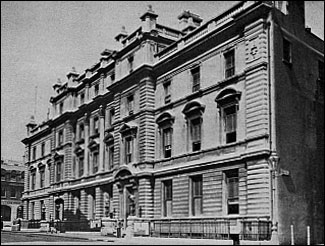
Bow Street
*************************************************
Back in Cosgrove Branson had maintained links with the publicans of the village, who knew him as “a rotund, jovial man with a charming wife.”
On 18th December 1894 GF Branson and his wife Eliza witnessed the marriage of the publican James George Knight, landlord of the Plough, in Cosgrove, recorded in Cosgrove Church records.
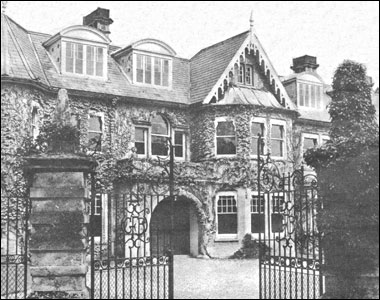
“It is a fact that Branson built the Lodge [in Cosgrove] on the site of the former farmhouse in 1898 – and he made sure people remembered him. His name was cut on a foundation stone near the front door. His initials stand boldly in stone over the porch, intertwined in the massive black iron gates and still be vaguely seen on some doorknobs.
“G.F.B. is carved over the fireplace and in the hall – but the Bransons did not need the initials. People still talk of his fabulous extravagance, his generosity, his drinking and his all-night parties.”
Wolverton Express 2nd May 1958
One of Mr. Amos’s recollections is of a feast at Cosgrove, when £10 was offered for a shave the goose contest. The winner was Mr. Fred Sykes, the Wolverton barber. The donor of the £10 was Mr. George Frederick Branson who, after winning a lottery prize in America, returned to rebuild Cosgrove Lodge. Mr. Sykes received £6.00 and gave his goose to the village constable at Yardley Gobion.
Branson also had a house in London at Norfolk Villa, Willoughby Park, Tottenham.
George Frederick appears in the 1901 Cosgrove census with his wife Eliza and two servants at the Elms Farm site, Cosgrove Lodge. The Bransons left Cosgrove in 1903, but retained ownership of Cosgrove Lodge for a few years.
*************************************************
In the 1911 census Branson was living in Leytonstone, Essex as a boarder – a single man. He claimed to have been born in Stony Stratford.

A Special Marriage licence was issued in 1909 to Alice Levy to marry George Frederick Branson. Her actual name at the time was Alice Pick, and it is disputed whether her previous marriage was legally dissolved.
Sheffield Daily Telegraph 06 July 1911
MARRIED BY LICENCE REMARKABLE EVIDENCE LADY’S SUIT.
A strange case was opened in the King’s Bench yesterday when Mrs. Alice Pick sued George Frederick Branson, of Westgate-on-Sea, for the delivery of certain jewellery and for damages for trespass on her goods, and for assault. Defendant denied that the goods were plaintiff's, and counter-claimed for the detention of various articles by plaintiff and for money paid on her behalf and lent to her.
Sir Frederick Low. K.C., said that plaintiff in 1883, when she was about 16, married a man named Demeter Pick. In 1891 there was a deed of separation, and eventually Pick went to America in 1904 the husband sued for divorce in America, and plaintiff did not defend the case. In 1909 she was introduced Mr. Branson, who from the first professed a violent affection for her. He told her that his solicitor said there could be no doubt that she was perfectly free to marry again. Apparently he found out that it was difficult for a divorced person to get a licence, and accordingly swore she was a widow. The affidavit, remarked, Sir Frederick, was a curious document. The defendant was living in Finsbury Park at the time, but in it gave his address Holland Road, Kensington, and gave plaintiff's name Alice Sarah Levy. He also induced her to sign the marriage register in her maiden name of Levy. For some time they lived together, but ultimately defendant deserted her, carrying off with him certain valuables, amongst them the presents she was now suing for, and a watch and chain belonging to her father. In July he had committed a gross assault upon the lady, damaging her dress and hat, and destroying a dining-room table by banging it on the floor. Before he left her he had been given cheque for £50 pay the rent, rates and taxes. He now said that the cheque was in payment on account of an alleged loan of £115 made to the plaintiff. Early this year, continued counsel, a charge of bigamy was made against the plaintiff.
Mr. J. R. Randolph, for defendant, urged that this had nothing to do with the case, and that Mr. Branson was only witness in the prosecution because the police told him that he must give evidence. Sir Frederick Low suggested that the prosecution was, in fact, brought about Mr. Branson's instrumentality. The lady, he continued, was remanded several times, but eventually the charge was dismissed. The hearing was adjourned.
*************************************************
Patrons of the pubs at Cosgrove remembered Branson’s eccentric generosity – on one occasion he is reputed to have given a drinking partner a horse, on another, a suit of clothes.
Gossips predicted, “He’ll die a pauper.”
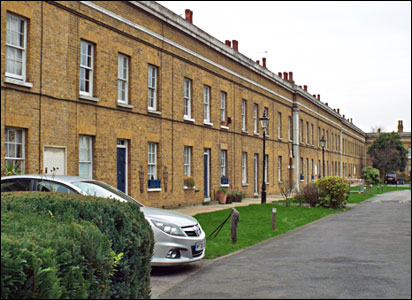
George Frederick Branson died on 26th December 1926.
He was living as a guest of the Licensed Victualler’s Association with his final wife Kathleen in their Almshouses in Peckham. His will showed his assets to be £28 15s. This would have included his clothes, any possessions having been sold, and any cash in his pockets.
|